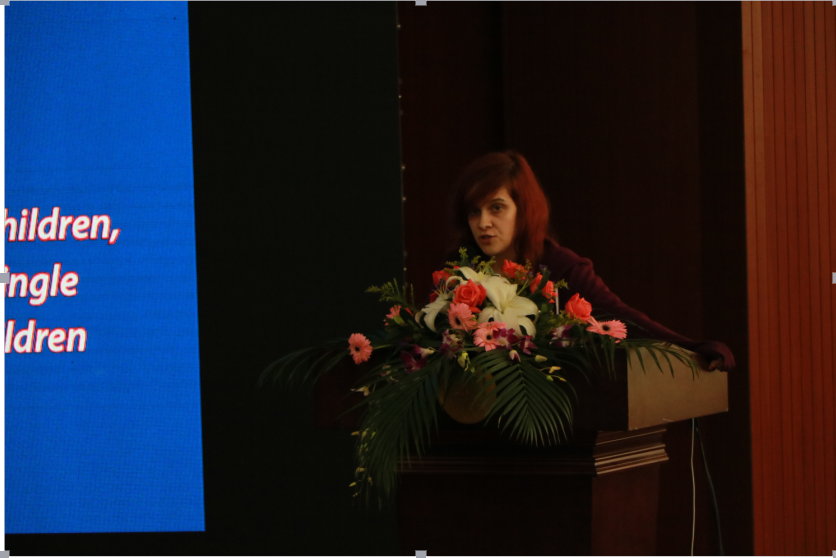2016首届中国动画学年会嘉宾发言辑要(之七)
会议地点:成都大学学术交流中心
会议时间:2016年11月19-20日
组织机构:
指导单位
中国动画学会
中国电影家协会动画电影工作委员会
国际动画协会中国分会(asifa-china)
亚太动画协会(中国区)
中国动漫集团
主办单位
成都大学
《当代电影》杂志社
承办单位
四川动漫研究中心
成都大学美术与影视学院
成都大学动画学院

学术主持:郭春宁
论坛嘉宾:micha? bobrowski
题目:subversive machinery. diy philosophy in films of julian antonisz

the paper is dedicated to julian ‘antonisz’ antoniszczak (1941-1987), arguably the most extravagant figure of polish school of animation who is remembered mostly as the author of oddball ‘non-camera’ films drawn, painted, scratched, burned or woodcut-printed directly on 35 mm tape. his strong inclination towards visual experiment makes him akin to internationally acclaimed avant-garde filmmakers such as norman mclaren, stan brakhage or len lye, yet, in comparison to these artists, antonisz’s output appears as far less hermetic and exclusive. due to his ability to combine the experimental approach to film medium with appealing mockery of socialist reality and dadaist feeling for pure nonsense, the director won a significant popularity among polish viewers. it seems characteristic that antonisz’s artistic method based on radical dedication to ‘do it yourself’ philosophy, his anarchistic sense of humor as well as natural distrust of authorities and mainstream doctrines made him a cult artist for polish punk movement vital in 1980s.
antonisz nonchalantly rejected everything what constitutes commonly understood professionalism in filmmaking. instead he emphasized hand-made and home-made qualities of his films composed of harsh animated loops randomly crosscut with often blurry or underexposed live-action footage, accompanied by voice-over commentaries read by nonprofessional actors and insanely joyful, usually poorly performed music written by the director himself. antonisz’s offbeat visual imagination was complemented by his extraordinary mechanic skills. in his apartment he had constructed several technical devices that in time accumulated into a private manufacture of direct animation. antonisz’s inventions served one major goal ? to enable him to limit the studio to his own room and thus to liberate him from the official circuit of production.
the paper focuses on antonisz’s pursuit for artistic independence in times of ideological hegemony. his work is treated as an exemplification of the wider context of polish dissident art which over the last two decades of communism employed guerilla methods for sending subversive messages.
micha? bobrowski先生个人简介:
2013
波兰雅盖隆大学,教育学院,哲学讲师
2005 ? 2010
波兰雅盖隆大学(jagiellonian university),社会传播人类学,艺术研究
博士学位
博士论文《黑泽明:边缘之地的艺术家》(akira kurosawa. the artist of the borderland)
2000 ? 2004
波兰雅盖隆大学,社会传播人类学,文化研究
硕士学位
硕士论文《受难之轻:monty python反神话叙事的十字军征途》

学术主持:郭春宁
论坛嘉宾:olga bobrowska
题目:how the canon was tempered: classic chinese animation in the mirror of festival circuit

the paper focuses on the correspondence between film canon built by international festivals' recognition and top-down established cultural policies by the example of history of mainland chinese animation (1955-1989).
8th venice international children ff jurors' verdict that confused prc with ussr as a country of production of why the crow is black? (dir. qian jiajun, li keruo, 1955-56) irritated chinese leaders and put shanghai animators on the fast-track to minzu (national) style. this resulted in the invention of the bursh-and-ink painting animation style which aimed to translate essentially chinese aesthetics into film language. two acclaimed films chart borderlines of the classic period: the magic brush (dir. jin xi, you lei, 1955), a puppet fairytale presenting propagandistic vision of modernization and feelings from mountains and water (dir. te wei, ma kexuan, yan sanchun, 1988), a metaphorical summary of chinese animators' achievements.
one may observe a particular pattern in festival circulation of chinese films: international successes (awards in annecy, zagreb, cannes, locarno, etc.) of films realized by e.g. te wei (where is mama?, 1960) or wan laiming (havoc in heaven, 1961-64) confirmed appreciation received on the national level. post-maoist films by a da (nezha conquers the dragon king, 1978-79) or zhou keqin (monkeys fishing for moon, 1981) resembled officially acceptable level of revisionist critique. if western recognition of the films produced in the countries of warsaw pact has usually supported the development of subversive art in soviet bloc, the acknowledgement of chinese achievements concurred with mainstream consolidation in prc.
the artistic pursuits of prc animators should be acknowledged for its uniqueness and intellectual potential. at the same time it is worth noticing that artistic animation was an integral element of propaganda apparatus. the author argues that international festivals' appreciation of chinese films complying with official ideology facilitated chinese leaders' efforts of cementing animated film canon accordingly to political requirements.
olga bobrowska女士个人简介:
since october 2013
博士生
波兰雅盖隆大学(jagiellonian university),社会传播人类学,
艺术研究,电影研究方向
博士论文: 中国动画电影研究方向
october 2010 -june 2013
硕士学位
波兰雅盖隆大学(jagiellonian university),社会传播人类学,
视听艺术学院
硕士论文《莱谢克?柯拉柯夫斯基哲学故事的动画改编》
(以《关于来洛尼亚王国的十三个童话故事》为例)


